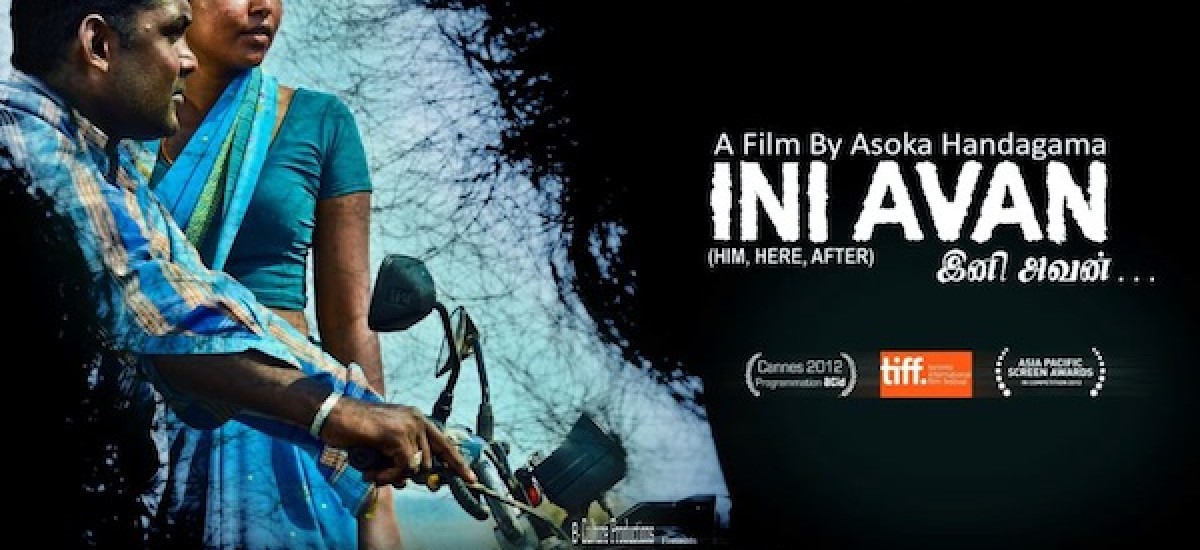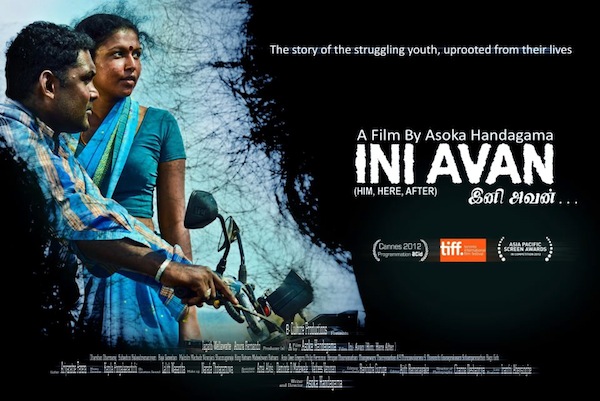Ini Avan, Asoka Handagama’s latest film, in Tamil, has won international cinematic acclaim. And it is easy to see why. The film has interesting characters who within their confined destinies take some unpredictable turns and moves at a compelling and deliberate pace through carefully designed frames with strong aesthetic appeal that are also revisited, like recurring motifs, to telling effect. The camera-craft is sophisticated and the casting and acting impressive.
The tale itself, involving different narratives—built mainly around an ex-LTTE fighter struggling to rebuild his social life and livelihood, a young woman whose love for the former comes up against barriers of caste prejudice and forced marriage, and an enigmatic middle-aged woman battling against the odds to provide for her family —is powerful and complex in its own way. While drawing attention to the internal contradictions within post-war Tamil society, the narratives do not necessarily follow predictable trajectories.
Ini Avan is beautiful but at the same time leaves behind some discomforting questions regarding the film-maker’s portrayal of state and society in the North. The questions I want to focus on in this very brief reflection are those that have to do with the absence of the military and the state from the film because this, in my view at least, impinges significantly on the very integrity of the film.
Ini Avan was shot around two years after the war, yet the military, which even today is so much more than just a ‘presence’ in the North, is very conspicuous by its absence from the film. The film registers the increasing presence of Sinhalese civilians in and around Jaffna but omits to acknowledge the authoritarian presence of thousands of Sinhalese military personnel. This creates a terrain faux on which the drama of the film is played out. One is not suggesting that every thing that happens in every one’s life in the North is shaped by the military. However, it is well known that the latter has a very heavy footprint in so many spheres of life, particularly in the case of ex-LTTE combatants who are marked for thick surveillance and monitoring by the military. But Handagama’s hero and indeed all other characters live in a parallel universe, one in which with the end of the war the soldiers quietly went back to wherever they came from, leaving them to contend with unscrupulous agents of corrupt private interest or internal social and personal wounds.
The singular absence of the state from the film is but an extension of the absence of the military, since, in the North, the former does not exist independently of the latter. While the three main characters are portrayed as active agents striving to do more than just submit, the picture that emerges of Tamil society is a somewhat dis-embedded one. Can the many contemporary cleavages in Tamil society in the North be entirely abstracted from the forces of the state and the military? This is pertinent because Ini Avan is very much a ‘post-war’ film, in as much as the conflict and war are still the underlying principal force and referents, yet the film totally eliminates its only surviving, not to mention victorious and hegemonic, architect. It is hard to explain this as anything else but an erasure; the authenticity of location is ruptured by the manifest falseness in representation. One wonders whether this was a condition under which the film was allowed to be made in the first place?
Ini Avan reduces social travails in the North to one in which some less powerful but relatively more principled individuals battle others who are either seeking to profit from the former’s predicament or are blinded by hurt and prejudice. The film captures a social context that is fraught with trauma and divided along lines of gender, caste, and class but these cleavages are totally abstracted from the present, thus erasing, albeit very aesthetically, the specificities and embeddness of Tamil society in a highly militarised and undemocratic post-war Northern Sri Lanka. The film combines a construction and focus on the ‘enemy within’ Tamil society with an individuation and abstraction of post-war social dynamics, which the Sinhala-Buddhist state and large sections of the majority are more likely to be comfortable with.
In this sense, for all its aesthetic appeal, Ini Avan, is a film set to a Sinhalese grammar. It is a film in Tamil but the gaze is distinctly Sinhala.


